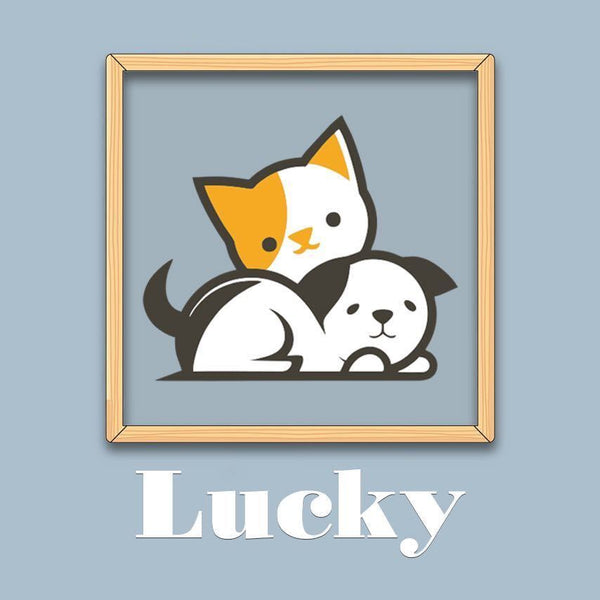How to Read Pet Food Labels
Inside this Article:
Introduction
What your pet eats daily plays a crucial role in their overall health and longevity. As loving pet parents, we often spend hours comparing pet food options — checking ingredients, price, origin, kibble size, and taste. But there's one critical area that’s often misunderstood or even overlooked: the pet food nutrition label.
Understanding how to read a pet food label isn't just helpful — it's essential. Let's break down the main nutrients listed on most dog and cat food labels, so you can make informed decisions that support your pet’s health and happiness.
Crude Protein: Essential Building Block

Protein is fundamental for both cats and dogs. It supports muscle growth, skin health, fur quality, blood circulation, and even brain function. When carbs and fats aren’t sufficient for energy, protein steps in as a backup energy source.

According to China’s pet food standards:
-
Puppy and pregnant/lactating dog food: ≥22% crude protein
-
Adult dog food: ≥18%
-
Kitten and pregnant/lactating cat food: ≥28%
-
Adult cat food: ≥25%

💡Note: “Crude protein” refers to total protein content — not necessarily its quality or digestibility. Too little protein can lead to poor development and anemia, but too much can burden the liver and kidneys.
Crude Fat: Vital for Energy and Nutrient Absorption
 Fat provides energy, helps absorb fat-soluble vitamins (A, D, E, K), and supplies essential fatty acids like linoleic, alpha-linolenic, and arachidonic acids. It’s especially important for brain function and skin health.
Fat provides energy, helps absorb fat-soluble vitamins (A, D, E, K), and supplies essential fatty acids like linoleic, alpha-linolenic, and arachidonic acids. It’s especially important for brain function and skin health.

Lack of fat may cause vitamin deficiencies, poor growth, and increased protein use for energy. But excess fat increases the risk of obesity, pancreatitis, and liver issues.
Crude Fiber: Supports Healthy Digestion

Crude fiber includes both soluble and insoluble fiber:
-
Soluble fiber acts as a prebiotic, supports healthy gut bacteria, and nourishes colon cells.
-
Insoluble fiber helps with stool bulk, improves colon motility, and reduces the risk of constipation.
Fiber is especially helpful for less active pets. However, too much fiber can interfere with the absorption of protein, fats, minerals, and starch — and may even cause constipation.

🧪 According to regulations, crude fiber in pet food should not exceed 9%.
Crude Ash: Often Misunderstood

Crude ash represents the inorganic residue left after burning the food at 550–600°C — essentially the mineral content (e.g., calcium, phosphorus, magnesium).

Maximum allowed crude ash content:
-
Cat food: ≤10%
-
Dog food: ≤10%
A higher ash content doesn’t necessarily mean poor quality. For example, foods made from deep-sea fish often have naturally higher mineral content, thus higher ash values.
Moisture Content: Defines Food Type

Moisture levels define whether a food is dry, semi-moist, or wet:
-
Dry food: <14% moisture
-
Semi-moist food: 14%–60%
-
Wet food: ≥60%

Water needs vary:
-
Adult dogs: ~100mL/kg/day
-
Adult cats: ~40–60mL/kg/day
Since dry food has low moisture, it’s crucial to provide fresh, clean water at all times to prevent dehydration and urinary issues — especially for cats.
Final Thoughts: Don’t Judge a Bag by Its Cover
Choosing the right pet food goes beyond fancy packaging or marketing buzzwords. Learn to read and interpret the pet food nutrition label to support your pet’s long-term health.
Whether you're shopping for dog food or cat food, understanding the balance of protein, fat, fiber, minerals, and moisture can make all the difference.
✅ Feed smart, love long — your pet deserves the best.




